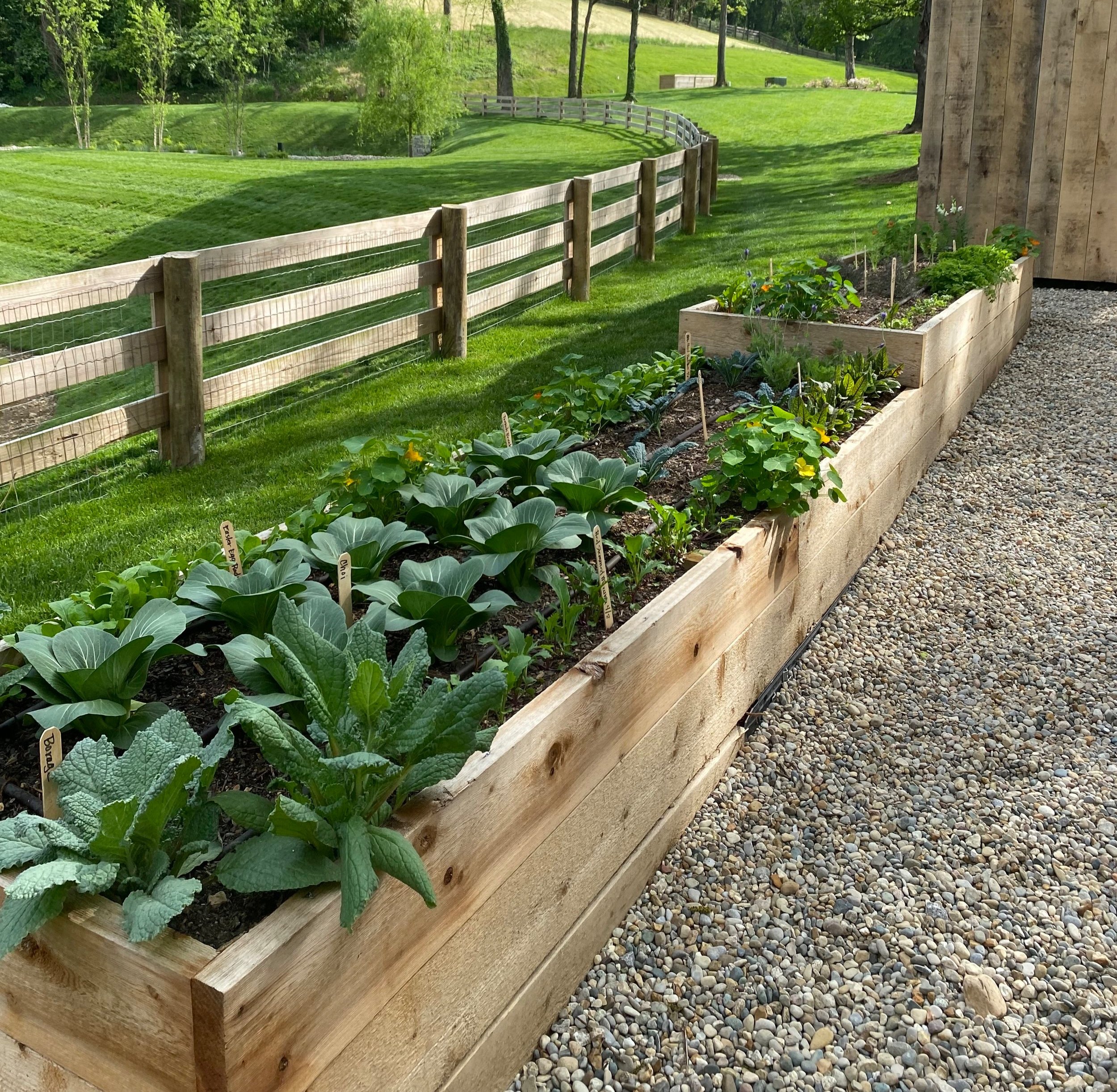
Vegetables + Herbs
Working Relationships Within Your Garden
When planning your vegetable and herb garden, it's important to remember that, like most things in nature, certain plants grow best together. This practice, known as companion planting, should be considered early in the planning process. It can enhance growth, support pollinators, deter pests, and improve soil health.
Tomatoes + Basil + Marigold
Basil can improve the flavor and growth of tomatoes, and its strong scent can deter pests. Marigolds also aid in repelling pests while attracting pollinators.
Corn + Beans + Squash
The three sisters. Traditional Native American Planting has used this method for many years. They use each plant to support the others. Corn provides natural trellis for climbing beans. Beans fix the nitrogen in the soil. Squash spread across the ground, allowing the soil to retain moisture.
Herbs To Repel Pests:
Nasturtiums attract spiders to help with pest control.
Onions help mask scents of plants that pest may want to eat, repelling them with their strong odor.
Micro Gardens
Even with limited space, it’s possible to grow a variety of plants. Whether you choose to garden indoors with a set of grow lights, or outside on a balcony, small spaces can still fulfill your gardening dreams.
We have seen someone successfully grow lemon bushes in an office! When there’s a will, there’s a way.
For the smallest of spaces, herbs are an ideal choice. They’re easy to grow, versatile, and thrive in containers. Plus, who wouldn’t love having fresh herbs right in the kitchen?
Here are popular herbs that do well in small spaces:
Herbs:
Basil – Loves the sun and brings a wonderful aroma. Its flower can change flavor, but can also make a great garnish.
Mint – Thrives in containers, but should be grown in its own pot. It can quickly spread and take over any size space. Some say that mint loves to run.
Parsley – A hardy herb that doesn’t require much space. A perfect candidate for small containers.
Thyme – Low-maintenance and forgiving. This herb loves full sun.
Chives – Compact, easy to grow, with the benefit of beautiful blooms in the springtime.
Cilantro – Perfect for small pots, and they offer a quick harvest for frequent use.
Oregano – Prefers full sun and thrives in containers.
Rosemary – A favorite for its decorative look indoors or outdoors. Just ensure it has good drainage. It is a slower growing plant.
Certain vegetables thrive in containers, making them excellent additions to your micro garden and valuable assets in your kitchen.
Vegetables:
Tomatoes – Many variety of tomatoes can do well. Mostly determinate tomatoes that don’t grow as large, or need as much trellising as indeterminate types. Cherry, Roma Bush, Early Girl and many more would work in this case. You will find tomatoes specifically bred for patios. just ensure there is plenty of sunlight
Lettuce & Salad Greens – Ideal for small spaces and can be harvested continually.
Spinach – Another leafy green that grows well in pots and can grow in spaces with some shade.
Radishes – They have a quick turnaround, allowing for multiple harvests.
Carrots (small varieties) – Shorter varieties are well-suited to containers.
Peppers (especially smaller varieties) – Needs a good amount of sunlight, but grow well in pots.
Green Onions – Doesn’t take up much space, and can be regrown from scraps.
Cucumbers (dwarf or patio varieties) – Small cucumber varieties are perfect for balconies, and can be grown vertically with a trellis
When growing a micro garden it is important to remember:
container: good drainage and appropriate depth
quality potting soil: moisture retaining soil is great for potted plants
These vegetables and herbs are great choices for small areas, but they’re just the beginning. Don’t hesitate to experiment and find creative ways to achieve your gardening goals with the space you have. Even if you’re a novice gardener, many plants are forgiving and will thrive as you learn and grow alongside them.



